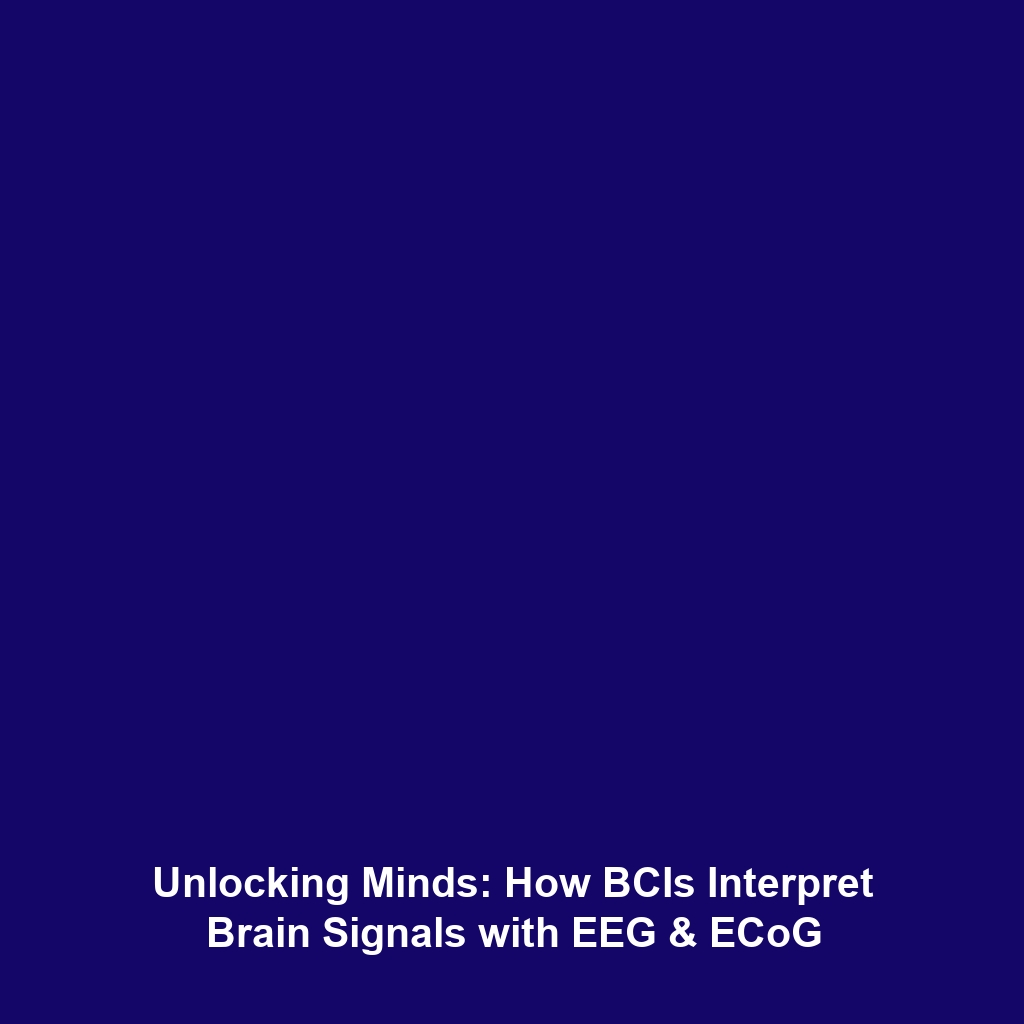Understanding Brain Signals in Brain-Computer Interfaces
Introduction
Brain signals form the bedrock of Brain-Computer Interfaces (BCIs), providing crucial insights into how the brain communicates through electrical activity. BCIs analyze these signals, typically captured through EEG (electroencephalography), ECoG (electrocorticography), or implanted electrodes. The ability to interpret these brain signals represents a significant breakthrough in neuroscience and technology, holding transformative potential for rehabilitation, communication, and augmenting human capabilities. In this article, we delve into the mechanisms of brain signal interpretation and explore its pivotal role within the field of BCIs.
Key Concepts
Understanding Brain Signals
Brain signals refer to the electrical impulses generated by neuronal activity in the brain. These signals can be detected through various modalities:
- EEG: A non-invasive method of monitoring electrical activity via electrodes placed on the scalp.
- ECoG: A semi-invasive technique involving electrodes placed directly on the surface of the brain.
- Implanted Electrodes: Invasive electrodes that provide direct access to neural signals by being implanted within or nearby the neurons.
How BCIs Interpret Brain Signals
BCIs utilize sophisticated algorithms to interpret brain signals, transforming the electrical activity into commands that can control external devices. This interpretation can pave the way for applications in medical rehabilitation and assistive technology.
Applications and Real-World Uses
The applications of brain signals in Brain-Computer Interfaces are diverse and impactful:
- Assistive Technology: BCIs empower individuals with motor disabilities to control computers and prosthetic devices using their brain signals.
- Medical Rehabilitation: BCIs can help stroke patients recover lost motor functions by interpreting their brain activity and providing feedback.
- Gaming and Entertainment: Researchers are exploring how brain signals can enhance immersive experiences in virtual reality environments.
Current Challenges
Despite the progress, several challenges remain in the understanding and application of brain signals:
- Signal Noise: Electrical noise and artifacts can obscure brain signal interpretation.
- Invasiveness: Procedures involving implanted electrodes carry risks, limiting their general usability.
- Interindividual Variability: Differences in brain structures and functions can affect the performance of BCIs across individuals.
Future Research and Innovations
The future of Brain signals in BCIs looks promising, with ongoing research paving the way for innovations:
- Advancements in Non-invasive Techniques: New technologies are being developed to improve the quality of non-invasive signal detection.
- Neural Decoding Algorithms: Enhanced algorithms aim to improve accuracy in interpreting brain signals, allowing for more responsive BCIs.
- Integration with AI: Artificial intelligence holds the potential to better predict and interact with brain signals, leading to more intuitive interfaces.
Conclusion
In summary, brain signals are crucial for the operation of Brain-Computer Interfaces, allowing for the interpretation and utilization of electrical brain activity through methods like EEG, ECoG, and implanted electrodes. The implications of this technology extend far beyond current applications, with promising research and innovations set to advance our understanding and capabilities in this domain. For more insights into how these technologies are reshaping our future, explore our additional articles on neurotechnology and rehabilitation technologies.
